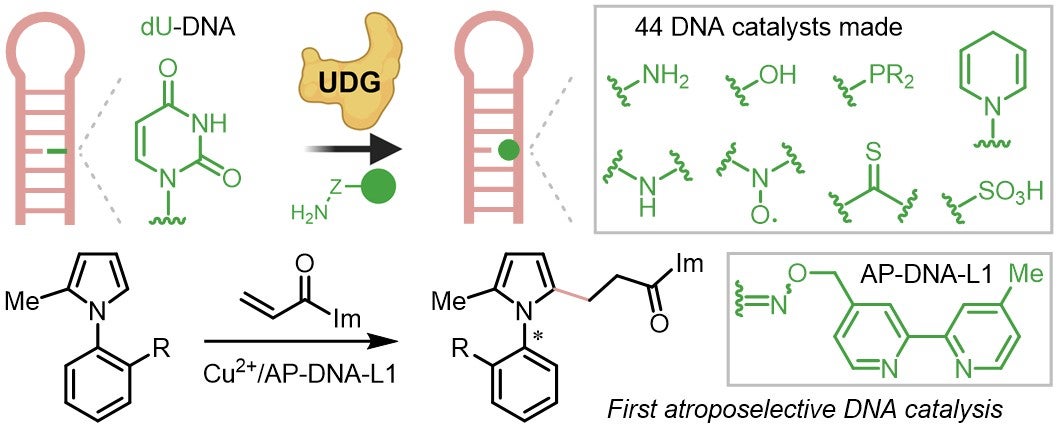
A research team led by Assistant Professor ZHU Ru-Yi, from the Department of Chemistry at NUS has developed a method that takes advantage of an enzymatic process called DNA repair, and combined it with biorthogonal chemistry to create chiral DNA catalysts. This method simplifies the production of DNA catalysts, allowing even non-specialists to perform DNA catalysis without the need for advanced instruments or expertise. Moreover, bioorthogonal chemistry reactions proceed without interfering with any functionality, making this method highly compatible with diverse functional groups. The research findings were published in the Journal of the American Chemical Society.
Prof Zhu said, “Our method lowers the barrier significantly for conducting DNA catalysis, which previously required highly specialised, expensive and challenging solid phase synthesis.” “We expect that more researchers will realise the great potential of DNA catalysis and will join this exciting field of study,” added Prof Zhu. Looking ahead, the research team is actively designing new strategies to develop selective and sustainable chemical reactions via DNA catalysis. Read the full article here.

Schematic showing the development of a new strategy for synthesizing diverse DNA catalysts, allowing anyone without specialised skills to practice DNA catalysis. [Credit: Journal of the American Chemical Society]
